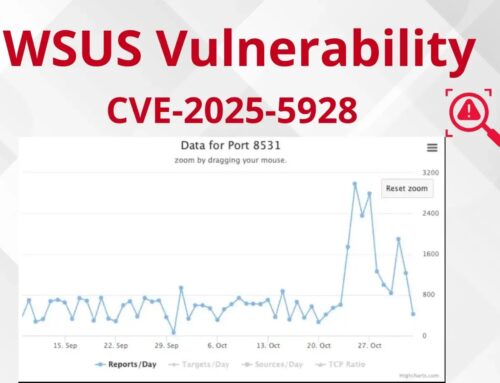
Multiple vtenext Vulnerabilities Let Attackers Bypass Authentication and Execute Remote Codes
Unauthenticated RCE: Critical vtenext CRM Vulnerabilities Expose Organizations
In the intricate landscape of enterprise resource planning, Customer Relationship Management (CRM) solutions are the bedrock of operational efficiency. However, a recent security analysis of vtenext CRM version 25.02 has unearthed multiple critical vulnerabilities that threaten the integrity and security of organizations relying on this software. These flaws allow unauthenticated attackers to bypass authentication mechanisms through three distinct vectors, ultimately leading to remote code execution (RCE) on target systems.
Despite previous attempted mitigations, the Italian CRM solution, widely adopted by numerous small and medium enterprises across Italy, faces significant security exposure. This comprehensive breakdown will delve into the nature of these vulnerabilities, their potential impact, and crucial remediation actions to safeguard your systems.
Understanding the Vulnerability Landscape
The core of the security issue in vtenext CRM version 25.02 lies in fundamental architectural and coding weaknesses that permit attackers to circumvent intended security controls. By exploiting these vulnerabilities, an attacker, without any prior authentication, can gain privileged access and execute arbitrary code on the server hosting the CRM. This level of compromise can lead to data theft, system manipulation, and potential integration into larger attack campaigns.
The three identified attack vectors reveal a significant lapse in the application’s security posture. While specific details of each vector are often withheld to prevent immediate exploitation, their collective impact points to a systemic issue where input validation, access control, and secure coding practices were inadequately implemented.
CVEs and Their Implications
While specific CVE numbers were not explicitly detailed in the provided source for each individual attack vector, the aggregate risk points to flaws that would typically be cataloged under weaknesses like improper authentication, broken access control, and insecure deserialization, depending on the technical specifics. It is critical for users of vtenext CRM to monitor official channels for assigned CVEs related to version 25.02.
- Unauthenticated Access: Attackers can bypass login procedures, gaining unauthorized entry to the system. This is a severe weakness as it eliminates the first line of defense.
- Information Disclosure: The ability to bypass authentication can often be leveraged to access sensitive data, exposing customer records, business intelligence, and internal operational data.
- Remote Code Execution (RCE): The culmination of these vulnerabilities is the ability to execute arbitrary code on the server. This is the most severe outcome, granting attackers full control over the compromised system.
Remediation Actions
Immediate action is paramount for any organization utilizing vtenext CRM version 25.02. Ignoring these vulnerabilities places your entire infrastructure at severe risk.
- Patch Immediately: The most crucial step is to apply any official security patches or updates released by vtenext. Monitor their official support channels and update policies. Ensure you are running the latest, most secure version available.
- Network Segmentation: Isolate the CRM server on a network segment with strict ingress and egress filtering rules. Limit its ability to communicate with other critical internal systems unless absolutely necessary.
- Web Application Firewall (WAF): Implement and configure a WAF in front of the vtenext CRM instance. A well-configured WAF can detect and block exploit attempts targeting common vulnerabilities like those described, providing an additional layer of defense.
- Regular Penetration Testing: Conduct regular, independent penetration tests on your vtenext CRM deployment to identify and address security weaknesses proactively.
- Security Monitoring: Enhance logging and monitoring for the CRM server. Look for unusual access patterns, file modifications, or process executions that could indicate compromise. Integrate these logs into a SIEM solution for real-time alerts.
- Principle of Least Privilege: Ensure that the vtenext CRM application runs with the minimum necessary privileges on the operating system.
- Data Backup and Recovery: Maintain robust backup and recovery procedures for all data associated with your CRM. In the event of a successful attack, this will be critical for business continuity.
Recommended Security Tools
Various tools can assist in detecting, mitigating, and monitoring for these types of vulnerabilities. While specific tools for vtenext may not be universally available, general security tools are indispensable.
| Tool Name | Purpose | Link |
|---|---|---|
| OpenVAS/Greenbone Security Manager | Vulnerability scanning and management | https://www.greenbone.net/ |
| ModSecurity (WAF) | Web Application Firewall (Rule-based protection) | https://modsecurity.org/ |
| Nessus | Comprehensive vulnerability scanning | https://www.tenable.com/products/nessus |
| Snort/Suricata (IDS/IPS) | Network Intrusion Detection/Prevention Systems | https://www.snort.org/ / https://suricata-ids.org/ |
Conclusion
The discovery of multiple critical vulnerabilities in vtenext CRM version 25.02 serves as a stark reminder of the persistent threats facing business-critical applications. Unauthenticated access leading to remote code execution represents the highest tier of risk, demanding immediate and decisive action from affected organizations. Prioritizing security patches, implementing robust network defenses, and maintaining diligent monitoring are not merely best practices but essential survival strategies in today’s cybersecurity landscape. Organizations must remain vigilant, leveraging threat intelligence and proactive security measures to protect their valuable assets and maintain operational integrity.





